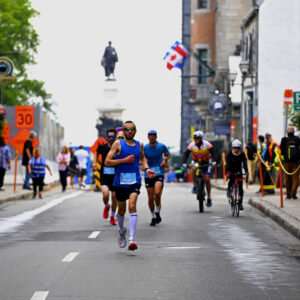
‘Out and about’: relationships between children’s independent mobility and distress in a national longitudinal study
Abstract Overview
Background: Children’s independent mobility (CIM) represents their freedom to travel in their neighbourhood without adult supervision. It has been speculated that secular declines in CIM have coincided with a major increase in mental health problems such as anxiety and depression among children.
Purpose: We investigated the relationships between two indicators of CIM and parent-perceived child distress in a national longitudinal study of Canadian parents.
Methods: We recruited 2,291 parents of 7- to 12-year-olds across Canada and followed up with participants every 6 months until June 2022 (i.e., 4 assessments spanning 1.5 years). We assessed mobility licenses (i.e., children’s permission to do certain activities on their own) with 6 items (Hillman et al., 1990) and home range (i.e., how far [in minutes] children can roam with friends and/or siblings) with a 4-point item. Parents reported their child’s distress on a validated 11-point scale. We used generalized estimating equations to assess relationships between CIM measures and distress controlling for children’s age and gender, household income, study wave, school attendance and whether the household was in isolation in the week preceding the survey.
Results: At each successive time point, the percentage of children experiencing clinically elevated distress was 51.8%, 44.0%, 43.2% and 42.4%, respectively. There was a graded association between home range and distress (p[trend] < 0.001). Compared to children allowed to roam 15-minutes (OR = 0.61; 95% CI: 0.51-0.72) had lower odds of elevated distress. CIM licenses were not associated with distress.
Conclusions: Higher home range was associated with significantly lower parent-perceived child distress during the COVID-19 pandemic.
Practical implications: Findings underscore the need for interventions to prevent child distress, including strategies to support children’s home range.
Funding: Heart and Stroke Foundation of Canada.
Additional Authors
Name: Guy Faulkner
Affiliation: School of Kinesiology, University of British Columbia, Vancouver, Canada
Presenting Author: no
Name: Mathieu Bélanger
Affiliation: Faculté de médecine et des sciences de la santé, Université de Sherbrooke, Sherbrooke, Canada
Presenting Author: no
Name: Mariana Brussoni
Affiliation: School of Population and Public Health, University of British Columbia, Vancouver, Canada
Presenting Author: no
Name: Katie Gunnell
Affiliation: Department of Psychology, Carleton University, Ottawa, Canada
Presenting Author: no
Name: Mark Tremblay
Affiliation: Healthy Active Living and Obesity Research Group, CHEO Research Institute, Ottawa, Canada
Presenting Author: no

